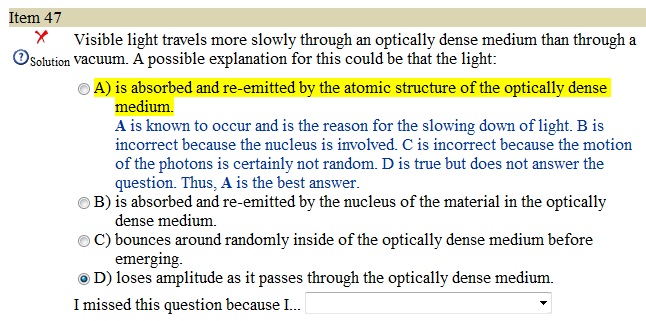Thank you for great explanations & analogies above, but I'm still a little confused (sorry!): If a decrease in amplitude results in energy loss, then wouldn't that imply that speed & wavelength change? That's contradictory to the above "amplitude is not affected by velocity, frequency, and wavelength" statement, in my head at least, and I'd appreciate any input to help me solve this

I think it might be best to disregard the fundamental wave equation and visualize the movement of light through a medium in general.
Amplitude is in essence the number of photons within the light packet. The question is asking about speed, and what is causing the light packet to slow down (take a longer time to traverse the path.) If light is absorbed along the path, then its intensity (amplitude) will decrease. If light is absorbed and then re-emitted, then its intensity (amplitude) should remain the same. However, time spent being absorbed and then re-emitted is time not being spent moving across the path, so it takes longer for that packet of light (group of photons) to traverse that path, meaning it is moving slower on average.
The important thing here is that rather than getting caught up in distractors and extraneous information, zero in on one key concept in the question: speed. The speed is reduced when passing through the medium because it is absorbed, held for a brief amount of time, and then re-emitted by the atoms of the medium (which store it temporarily by exciting an electron.) The amplitude is not related to the speed, so choice D is extraneous information, inserted to throw you off the scent. The fact that the amplitude drops (obeying to Beer's law), is irrelevant to the decrease in speed.
Consider this weird analogy. When you roll down your car window while driving, your hair gets messed up and it becomes harder to hear.
Question: A driver's hair gets into a disarray when exposed to fast moving air associated with a vehicle moving at high speed with the windows lowered. A possible explanation for this could be that:
A. the hair is jostled by collisions of air molecules with strands of hair .
B. the ambient decibel level increases due to more collisions with the eardrum.
Choice B is a completely true, albeit irrelevant statement. Only choice A is a valid explanation.

